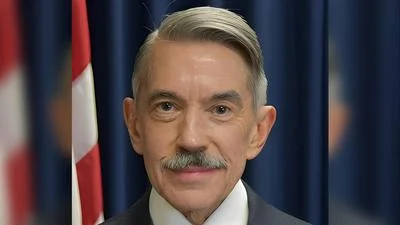PRM Work On Statelessness
The United States Government (USG), through the Department of State (DOS) Bureau of Population, Migration and Refugees (PRM), supports the identification, prevention, and reduction of statelessness and the protection of stateless persons. As the single largest donor to the United Nations High Commissioner for Refugees (UNHCR), PRM’s funding contributes to UNHCR’s core work on statelessness as well as its implementation and monitoring of the 10 actions of the Global Action Plan to End Statelessness: 2014-2024 (GAP) and the #IBelong Campaign to End Statelessness (#IBelong Campaign). PRM also funded the Global Campaign for Equal Nationality Rights (GCENR) at the Women’s Refugee Commission (WRC) and research on statelessness. Funding is complemented by bilateral and multilateral diplomacy.
Evaluation Overview
The Evaluation of PRM-Supported Initiatives to Prevent and Reduce Statelessness, hereafter referred to as “the evaluation,” seeks to inform PRM’s statelessness strategy through the end of the #IBelong Campaign in 2024 and beyond. PRM contracted Resonance, through the Performance Management and Evaluation Services (PMES) Indefinite Delivery Indefinite Quantity (IDIQ) mechanism, to carry out the evaluation. The evaluation report includes findings and conclusions from the evaluation research, which serve as the basis of recommendations for PRM. Findings are organized around the three main evaluation questions (EQs), to present (1) evidence of how PRM’s statelessness strategy is implemented through its funding and diplomacy, (2) an assessment of the effectiveness of the strategy and its contributions to the GAP, and (3) an overview of PRM’s monitoring strategy and remaining gaps.
Evaluation Scope and Methodology
The scope of this evaluation includes: (1) PRM’s funding in support of UNHCR’s statelessness mandate from 2014 to the present; (2) the effectiveness of the UNHCR GAP and the #IBelong Campaign; (3) PRM-supported U.S. multilateral and bilateral diplomatic engagements on statelessness from 2014 to present; (4) the effectiveness of PRM staffing levels and monitoring mechanisms for statelessness; and (5) the GCENR. Over a period of 10 months (July 2020-April 2021), a three-person Evaluation Team engaged a total of 165 people in the data gathering phase and close to 200 people through virtual interviews, workshops and focus group discussions (FGDs). The evaluation was conducted using a utilization-focused evaluation approach (U-FE), coupled with qualitative methods and outcome harvesting.
Key Findings and Conclusions
Multiple informants lauded the effectiveness in raising awareness of statelessness of both the GAP and the #IBelong Campaign, to which PRM contributes funding and diplomatic support. The 2019 High-Level Segment on Statelessness (HLS), an event to secure pledges on statelessness by country governments and other actors as a part of the #IBelong Campaign, was a particularly effective tool in raising awareness of statelessness and securing specific pledges from countries and organizations, although many countries with major situations of statelessness did not pledge. The Group of Friends of the #IBelong Campaign (Group of Friends), a group of UN Member States including the U.S., has been effective in supporting United Nations (UN) human rights mechanisms on statelessness such as through the Universal Periodic Review (UPR) and Human Rights Council Resolutions. These mechanisms, however, have not had much impact in effectuating change at the country level. Awarding a Nansen Refugee Award to a stateless activist and nominating regional finalists for the award was also rated as highly effective in raising awareness.
The evaluation evidence demonstrated that the GAP was underfunded and under-resourced by UNHCR, with only a slight increase in the budget for GAP activities in many countries. Most informants stated that, while UNHCR’s engagement on statelessness has improved, the issue is still not prioritized within UNHCR. This evaluation found that statelessness, while part of UNHCR’s core mandate, is not funded in proportion to the needs, in part because of UNHCR’s demanding mandate to address refugee and
humanitarian crises, for which the agency is always underfunded. The UNHCR Statelessness Section has done great work in issuing guidance on statelessness, but its position of relative low priority within the agency (as a Section rather than a Division or Service) means that its influence on country operations is indirect and often overshadowed by higher level Divisions and Services. Country Representatives are often siloed and under pressure to deliver on immediate, humanitarian emergencies with very limited
funds and few opportunities to share best practices on statelessness. There are concerns that the regionalization of UNHCR operations will further reduce statelessness staffing and programming within the agency, although UNHCR’s creation of Regional Statelessness Officer positions is a positive step. As well, multiple informants expressed concerns that UNHCR’s statelessness work will lose what momentum has been achieved during the #IBelong Campaign when it transitions in 2024 to the structures established as part of the Global Compact on Refugees. (The Global Compact on Refugees is a worldwide framework to achieve solutions for refugees, displaced persons, and stateless populations). The evaluation highlighted a strong and close relationship between PRM and UNHCR at the global and country levels.
The PRM Statelessness Focal Point based in Washington DC has been critical to the successful relationship between PRM and UNHCR but can only devote 25 percent of her time to statelessness, which limits her capacity to support PRM’s engagement with Embassies, the broader Department, and other agencies. Among informants, there is also the perception that PRM’s statelessness strategy has been mostly focused on eliminating gender discrimination in nationality laws, and its work with the Global Campaign, which aligns with GAP Action 3. While this focus led to important achievements, there is also a need for more attention focused on helping to address some of the other major causes of statelessness such as racial and ethnic discrimination. There is a lack of engagement from other donors on statelessness which could benefit from PRM and UNHCR urging them to do more. PRM support for UNHCR at the global level through multilateral diplomacy, such the Group of Friends, is not replicated at the country-level, where PRM’s Refugee Coordinators (RefCoords), with notable exceptions, were more focused on supporting UNHCR with its refugee and humanitarian caseloads. In general, RefCoords expressed a desire for more guidance from PRM Washington on how to best support UNHCR on statelessness. RefCoords stressed that they had little time to spend on non-refugee statelessness, sometimes as little as 10 percent. In general, PRM staff evidenced low knowledge of statelessness as a cross-cutting issue with serious consequences for democracy, human rights and peace and security. The evaluation revealed a vibrant civil society in many countries that lacked support, coordination, and funding to work on statelessness. Many civil society organizations (CSOs) conduct advocacy, awareness-raising, strategic litigation, provide legal aid and influence public opinion on the highly politicized issue of statelessness. Many interlocutors stressed that funding to CSOs will be critical to ending statelessness.
Key Recommendations
An updated PRM statelessness strategy could:
- Advocate elevating statelessness within the implementation of the Global Compact on
Refugees.
- Elevate the PRM Statelessness Focal Point role and dedicate it entirely to statelessness.
- Urge UNHCR to replace the “Statelessness Section” with a “Statelessness Division” or
“Statelessness Service.”
- Encourage UNHCR to give adequate and appropriate attention to its statelessness mandate
to achieve “mandate equality” with its refugee mandate and address concerns that
regionalization is weakening the prioritization of statelessness.
- Provide a contribution to UNHCR country operations to identify and fund local CSO
work on statelessness. Priority should be given to country operations that demonstrate they
will use PRM funding to create or expand activities past 2024.
- Educate other DOS bureaus on how statelessness is a cross-cutting development, human
rights, and democracy issue.
- Resume funding to the Global Campaign for Equal Nationality Rights.
Evaluation of PRM-Supported Initiatives to Prevent and Reduce Statelessness [160 KB]









